- News
- Reviews
- Bikes
- Accessories
- Accessories - misc
- Computer mounts
- Bags
- Bar ends
- Bike bags & cases
- Bottle cages
- Bottles
- Cameras
- Car racks
- Child seats
- Computers
- Glasses
- GPS units
- Helmets
- Lights - front
- Lights - rear
- Lights - sets
- Locks
- Mirrors
- Mudguards
- Racks
- Pumps & CO2 inflators
- Puncture kits
- Reflectives
- Smart watches
- Stands and racks
- Trailers
- Clothing
- Components
- Bar tape & grips
- Bottom brackets
- Brake & gear cables
- Brake & STI levers
- Brake pads & spares
- Brakes
- Cassettes & freewheels
- Chains
- Chainsets & chainrings
- Derailleurs - front
- Derailleurs - rear
- Forks
- Gear levers & shifters
- Groupsets
- Handlebars & extensions
- Headsets
- Hubs
- Inner tubes
- Pedals
- Quick releases & skewers
- Saddles
- Seatposts
- Stems
- Wheels
- Tyres
- Health, fitness and nutrition
- Tools and workshop
- Miscellaneous
- Buyers Guides
- Features
- Forum
- Recommends
- Podcast
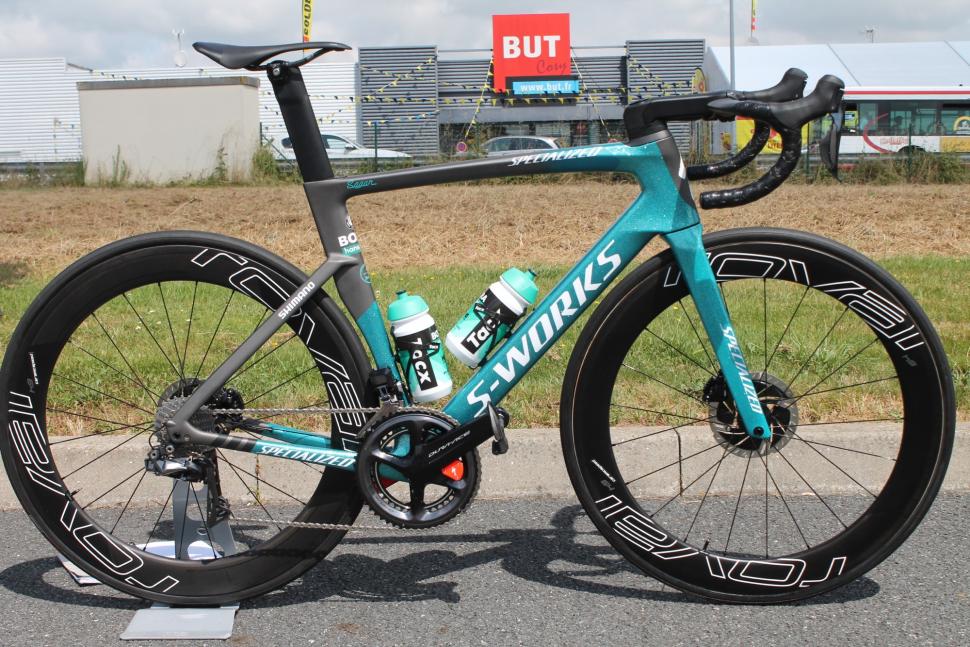 tour_de_france_2018_sagan_-_1_1.jpg
tour_de_france_2018_sagan_-_1_1.jpgTour de France Tech 2018: The rise and rise of disc brake aero road bikes
Disc brake equipped aero road bikes have seemingly taken this year’s Tour de France by storm with Peter Sagan and Fernando Gaviria each having won two stages on the new Specialized Venge and more riders than ever before racing on bikes of this genre. What’s going on and what kind of advantage can you expect to gain from an aero bike?
First of all, we’re not suggesting that these riders wouldn’t have won if they’d been on different bikes. That's not the point we're making. But it’s interesting that disc brake equipped aero road bikes are everywhere right now.
Between 2nd July and 9th July these models were announced:
• Specialized Venge (disc brake only)
• Cannondale SystemSix (disc brake only)
• BMC Timemachine (disc brake only)
• Trek Madone (rim brake and disc brake)
• Wilier Cento10Pro (rim brake and disc brake)
• Orbea Orca Aero Disc (disc brake, rim brake version already available)
Click on the names to get the details on each bike.
No one here at road.cc can remember a time when so many bikes were launched into a single sector in such a short space of time. All of these bikes apart from the Orbea are with teams competing in this year’s Tour de France. So what’s going on?
First, loads of brands coincide launches of their top-level race bikes with the Tour de France. It’s the sport’s biggest shop window, after all. They want to show off their latest products being ridden by the world's best riders.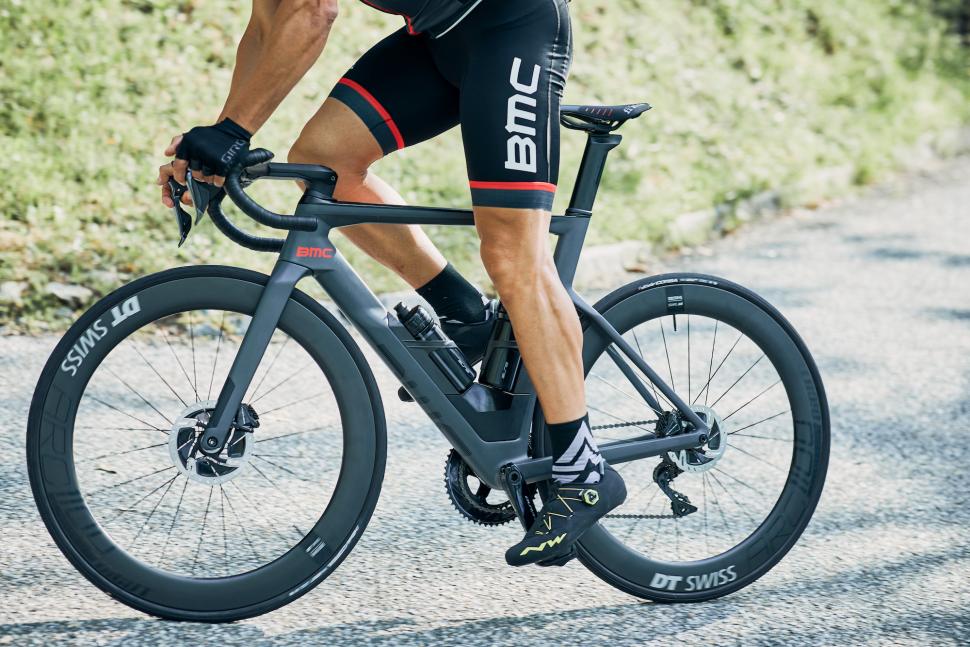
Second, it has become increasingly likely over the past few months that the UCI’s disc brake trial in professional racing would turn into something permanent, and it has now done so. With many bike buyers taking their cues from the pro peloton, it makes sense for brands to be ready with a full lineup of disc-equipped race bikes.
Even taking that into account, six new disc brake equipped aero road bikes in a week is really going some!
Check out our video of Peter Sagan’s Specialized S-Works Venge.
Why are some of these new bikes disc brake-only?
The new Specialized Venge, Cannondale SystemSix and BMC Timemachine are all disc brake only. Why go down this route?
It often used to be said that disc brakes put you at an aerodynamic disadvantage, but when Giant released the latest version of its Propel in a disc brake-only format this time last year, it said that its engineers had found that, with proper integration, a disc brake design could actually improve aero performance compared to a rim brake configuration.
“This is because the location of traditional callipers (either in front or behind the fork crown/ legs) creates 'dirty' air,” said Giant. “Opening up the fork crown area (by placing the disc-brake callipers down at the hub) means that the air hitting the new disc-brake calliper has already been disrupted by the leading edge of the tyre/wheel. This effect is further enhanced by an asymmetric fork that helps smooth out airflow over the calliper.”
Nathan Barry, the aerodynamicist behind Cannondale’s SystemSix, has told us a lot about how important the front end of the bike is in determining overall drag – which you’d probably expect (we’ll have a video interview with Nathan on road.cc next week).
The decision to make the SystemSix disc brake-only was made right at the start of the project, allowing Cannondale to come up with an integrated fork and what’s called a ‘chine’ design at the bottom of the head tube/ top of the down tube. The idea is “to redirect air flow coming up the back of the fork leg, channelling it downstream”. It would have to be a very different design if there was a brake calliper bolted to the fork crown.
“The disc brake-only design freed SystemSix from the constraints imposed by rim brakes, allowing engineers to achieve new levels of drag-reducing integration between the frame, fork and wheels,” says Cannondale.
Specialized says that it has designed the new Venge entirely around disc brakes because it feels that the benefits outweigh any negatives. Putting aerodynamics to one side, one of those positives is greater tyre clearance. The Venge will take a massive (for an aero road bike) 32mm tyre.
Specialized also says that it is reacting to sales which point to disc brakes eventually taking over from rim brakes.
Some big companies clearly believe in disc brakes to the extent that they feel they can ignore rim brakes entirely on these new models and in doing so avoid many costs involved in development and production.
Aerodynamics of disc brakes versus rim brakes
We’ve already mentioned that Giant believes that a bike with properly integrated disc brakes can have less drag than a rim brake bike.
Trek doesn’t go quite that far but it does say that there is no aerodynamic penalty in choosing the disc brake version of its new Madone (above) over the rim brake model. In other words, the drag is about the same whichever version you opt for.
Specialized tells us that disc brakes give it more freedom with frame and fork design because there’s no restriction caused by the positioning of the rim brake. This allows it to offset the drag caused by the disc rotor which, according to Specialized, is the only real issue (the disc brake calliper doesn't cause much drag) against improvements elsewhere.
Cannondale claims that the disc brake-only SystemSix is the world’s fastest UCI-legal road bike – so it’s more aerodynamically efficient than any rim brake bike out there, according to Cannondale’s wind tunnel data and yaw weighted drag calculations.
Cannondale’s new white paper says that the SystemSix will save you 11 watts over the Cervelo S5 rim brake bike when you’re riding solo or on the front of a group at 48km/h (30mph), and 6 watts over the Trek Madone 9 Series, also a rim brake bike.
Is an aero bike an advantage all the time?
Most Tour de France riders have the choice of either an aero road bike or a lightweight road bike. For example, Trek-Segafredo riders can go for the lightweight Emonda or the slightly heavier but more aerodynamically efficient Madone, the EF Education First Drapac p/b Cannondale team can opt for the superlight Cannondale SuperSix Evo or the more aero SystemSix, and so on. Riders make their selection based on the course and their individual preference, many choosing the aero bike for flat stages and the lightweight bike for hilly/mountainous days.
According to the white paper that Cannondale has published to accompany the launch of the SystemSix, “Aerodynamic power is a cubic function of velocity. This means that aerodynamic power increases much more rapidly than other resistive terms [rolling resistance, wheel bearing resistance, and so on].
“Aerodynamic resistance increases its proportion of total resistance as your speed increases. But this is not to say that it is only important at some arbitrary high speed… Aerodynamic resistance is more than 50% of total power at speeds above 15 km/h (~9 mph). This means that aerodynamic drag has a large impact on cycling performance at all levels.
“It is still sometimes quoted that aerodynamics only matters above a certain speed and therefore aerodynamic performance is only relevant to elite athletes… For a given aerodynamic saving, a faster rider will have a larger power saving. However, the opposite is true for time savings. Because a slower athlete spends more time on course, the equivalent drag saving actually results in a larger time saving than for the faster athlete.”
What about on the hills though? Are riders right to switch from an aero bike to a lightweight bike for a summit finish?
“On flat roads mass has very little impact and so aerodynamic savings will always have a greater impact on performance,” says Cannondale. “As gradient increases we will reach a break even point
at which the aerodynamic saving and weight saving provide equal performance. Only above this gradient is a weight saving benefiting performance.”
And where is that tipping point? Cannondale has given data comparing its SystemSix, the aero one, with the SuperSix Evo which is around 1kg lighter but with 0.034 m2 greater aerodynamic drag. For Cannondale’s notional rider (go to the white paper for all the details) putting out 4 W/kg on a climb, the tipping point is at 6%. In other words, if the slope is below 6% he’s at an advantage on the SystemSix, even though that bike is heavier, if it’s steeper than 6% he’s at an advantage on the SuperSix Evo.
“This tipping point is affected by the mass and power of a rider,” says Cannondale. “Higher power-to-weight ratio (for a stronger rider) shifts the tipping point to a higher gradient. This is because
more power results in higher climbing speed and thus the influence of aerodynamics is more pronounced. For our professional riders that are climbing at and above 5 W/kg the tipping point is closer to 7%.”
Of course, the ideal would be to have a bike that’s both lightweight and aerodynamically efficient – the best of all worlds. That’s what Merida has created with the Reacto KOM that Vincenzo Nibali is using in the Tour de France (we’ll step away from the aero/disc brake theme for a mo; this is a rim brake bike).
Nibali has usually ridden Merida’s lightweight Scultura bike in preference to the much more aero Reacto, but he won Milan-San Remo earlier in the year on a Reacto. However, the Bahrain-Merida of the Reacto, built up with sponsors’ kit, weighs 7.2kg – 400g over the UCI’s minimum weight limit for racing.
With that in mind, the Reacto KOM has been created for Nibali (Merida did something similar for Rui Costa back in 2014). Merida says that the frame is made using the standard lay-up “but with the lightest possible carbon strains chosen and integrated into the various segments”.
Team sponsor FSA supplied a superlight cockpit (rather than a Metron 5D combined handlebar and stem), Continental provided lightweight tyres, and the bike is fitted with titanium wheel and pedal axles.
The finish has also been kept minimalist with very little paintwork.
Merida reckons that the Reacto KOM comes in right on the limit at 6.8kg.
Check out our Merida Reacto Disc Team-E review here.
Although Merida has taken things to extremes, it’s worth noting that many top-end aero road bikes don’t weigh all that much more than 6.8kg. The rim brake version of the new Trek Madone, for instance, is 7.1kg while the disc brake model weighs as little as 7.5kg (and both have adjustable IsoSpeed). The new Specialized Venge (disc brake-only, remember) has a claimed weight of 7.1kg (56cm) in a Shimano Dura-Ace Di2 build.
Want more 2018 Tour tech? Then visit our special Tour de France tech 2018 tag page and fill yer boots!
Mat has been in cycling media since 1996, on titles including BikeRadar, Total Bike, Total Mountain Bike, What Mountain Bike and Mountain Biking UK, and he has been editor of 220 Triathlon and Cycling Plus. Mat has been road.cc technical editor for over a decade, testing bikes, fettling the latest kit, and trying out the most up-to-the-minute clothing. He has won his category in Ironman UK 70.3 and finished on the podium in both marathons he has run. Mat is a Cambridge graduate who did a post-grad in magazine journalism, and he is a winner of the Cycling Media Award for Specialist Online Writer. Now over 50, he's riding road and gravel bikes most days for fun and fitness rather than training for competitions.
Latest Comments
- Veganpotter 0 sec ago
5000miles in on my trainer bike with Silca Synergetic and my bottle looks like I can return it without getting any questions😂 I have a very strong...
- stonojnr 30 min 35 sec ago
Id want my money back if Id paid to read it, the Daily Star used to print better quality storys than that, call that quality journalism ?...
- eburtthebike 1 hour 16 min ago
“it’s only right tiny minority who recklessly disregard others face full weight of the law” Of course. But not the reckless majority.
- stonojnr 1 hour 26 min ago
Ducati is the wrong comparison, Ducati sell because they have the Italian sports heritage, and their bikes just always look and sound right....
- mark1a 2 hours 9 min ago
A bit of an update on this. I'm indirectly involved in a plan as one of my work colleagues runs the local cycling club. I say indirectly as I'm not...
- chrisonabike 2 hours 29 min ago
Perhaps you're confusing them with "Just stop oil"?...
- don simon fbpe 3 hours 16 min ago
Aren't the levers backward compatible?
- A V Lowe 4 hours 17 min ago
Been working with rail & bus operators for around 40 years, with a lot of data from systesm world-wide...
- MikrG 4 hours 29 min ago
Some Highways Authorities insist on over engineered designs, and that might have happened here. They should be following Local Transport Note 1/20.
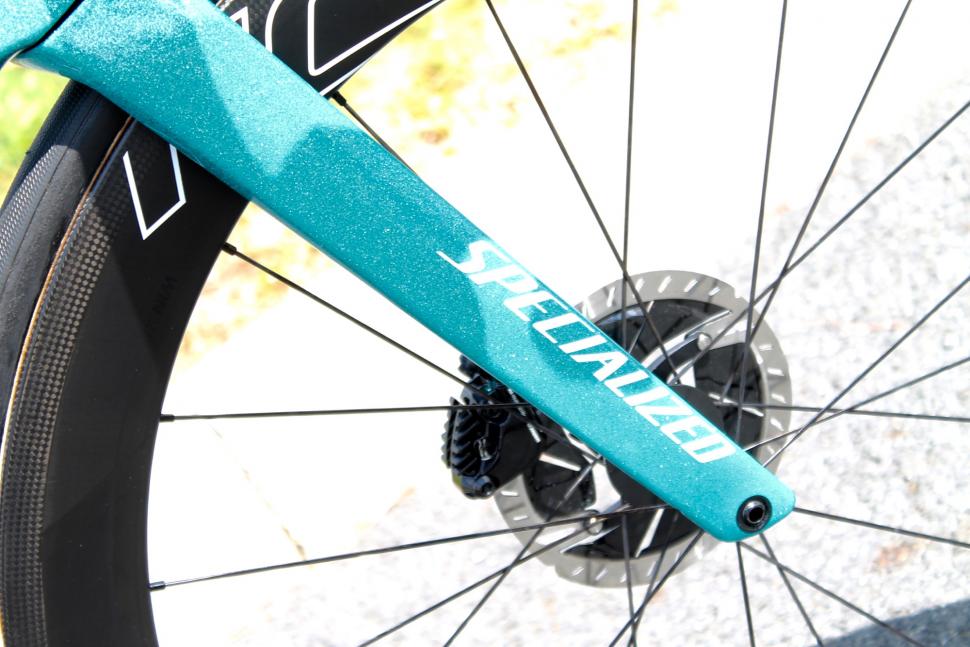

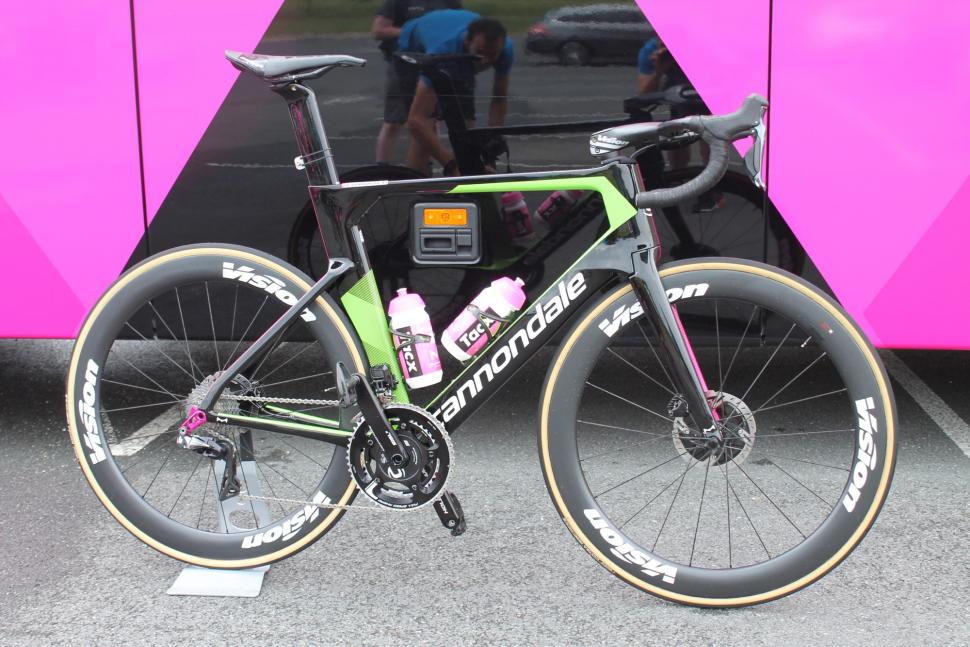





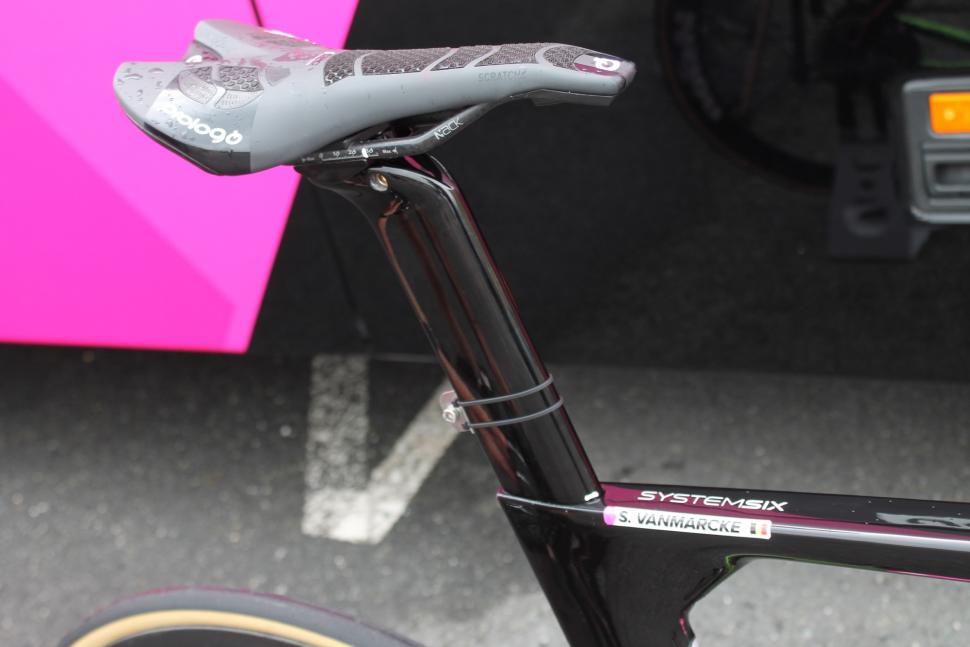
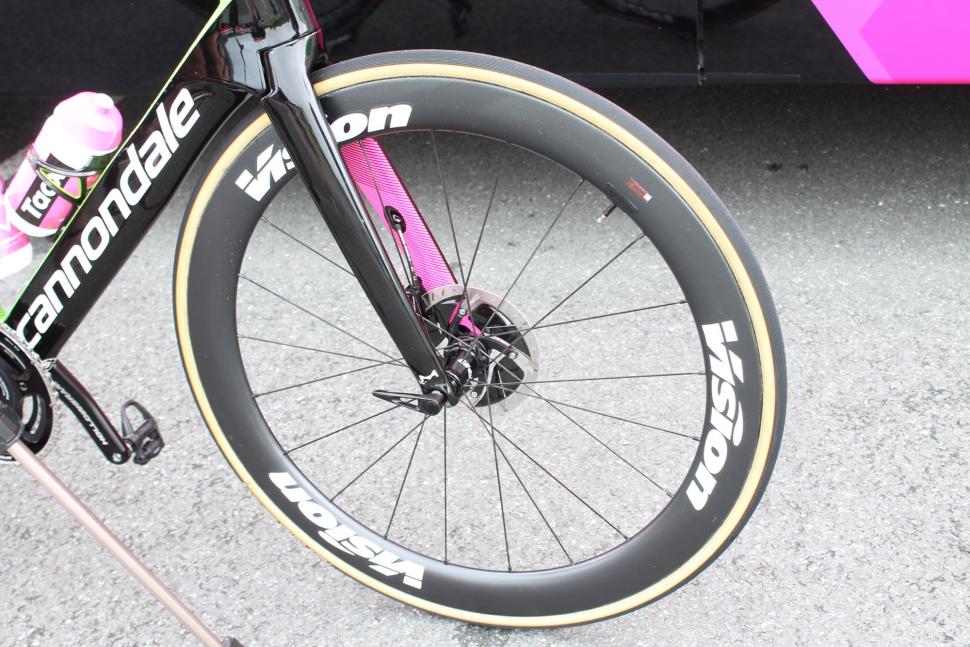
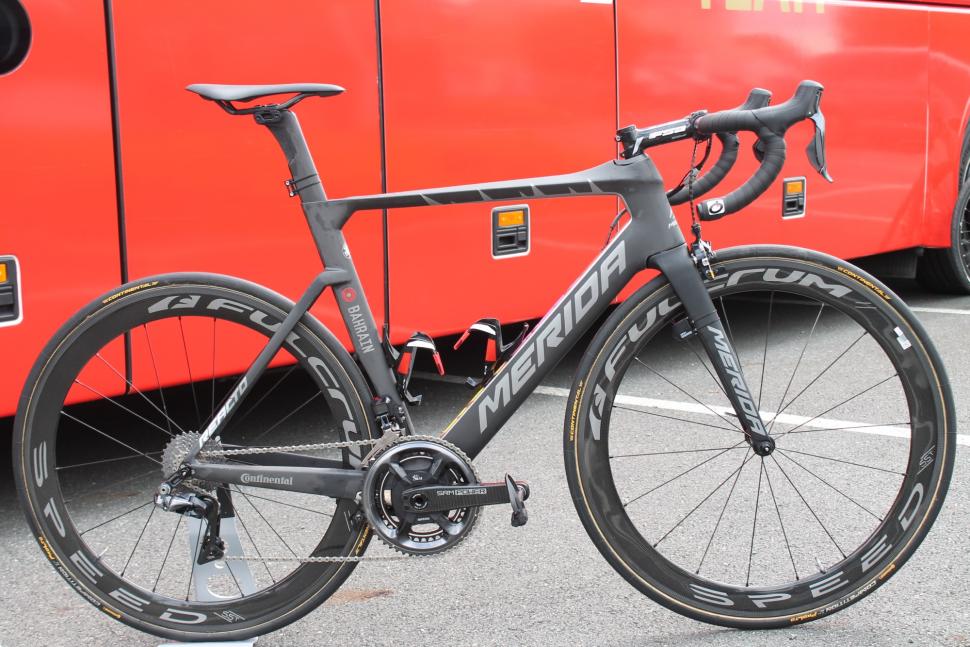

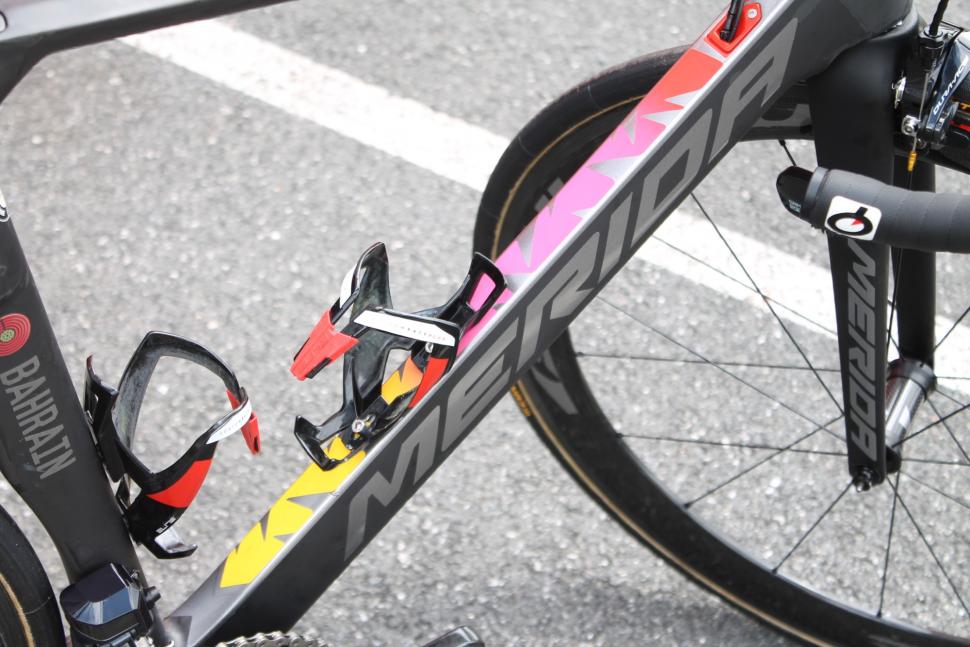
Add new comment
13 comments
This might be true for the most part, but I think with disc brakes it's actually the peleton following the public.
It’s like a religious conviction. Even a quite balanced bit of writing on the latest bikes and how disks are proving to be more aero, and details of when pros are using disk or rims immediately brings out the same old “disk breaks will never work” etc... Seriously, it’s just idiotic now. It’s like vegans or people who don’t own a TV. This need to smugly announce how you are so much cleverer than other people, in the face of facts. We are one step away from the word “sheeple” being used.
Or it's just a load of marketing pish from the big players, defended by fuds who bought into it and promoted by the cycling media that need to pump column inches and side ads. It was only just the other day that 25mm tyres were the new 23s but now every chubber is on space hopper tyres, frame bags and MASSIVE cassettes to ride on a canal path for a long afternoon of extreme adventure riding.
In the words of a certain John Joseph Lydon - Ever get the feeling you've been cheated?
Ah John Lydon master of detail and logic......
What's your objection to, new bikes, new technology. Would you prefer that we don't manufacture new bikes?
What exactly is your objection to chubbers (or normal people as they are normally refered to) owning bikes that have a comfortable ride and gears that let them climb any concievable hill without needing to get off and push?
The fact is that any one of the advancements on their own and particulary in their early versions bring pretty minimal gains. However over time these all add up, even a 1% improvement a year doubles in 70 years, a 5% improvement doubles in 14 years.
I don't even see an objection on asthetics, these integrated aero-disc bikes all look clean and fast.
Or could it be that we've suddenly realised that we've been fooled for years into thinking that narrow tyres are faster/better, that wearing your rims down every time you want to slow down is a perfectly sensible idea, and that disc brakes are in fact rubbish despite them being adopted fully for use on every other vehicle (inc. the other half of the cycling world ... MTBs)?
Perhaps all those 'chubbers' are the enlightened ones, wanting better brakes and a more confortable ride and you are in fact the one that's been blinkered by all the previous marketing and percieved 'wisdom'?
Have companies and marketing men spotted an opportunity to sell stuff ..... sure. But you can only market something when there is already a market for the product (e.g. you don't see an advert for something christmas related in January!).
Finally - you don't have to buy any of this. You stick with your steel frame, skinny tyres and caliper brakes if that makes you happy. Or you could go for a test ride on a disc brake equipped fatter tyred 'adventure' bike or sculpted carbon aero bike to see what the fuss is about. If you still don't like it, no problem. Don't buy it.
Apart from a small smatering of sprinters and about half of Trek you should be reporting on the huge proportion of the peloton that are not on disc equiped bikes even after the UCI have given the green light. It's just not happening.
You could do worse than reading the article and the good deal of interesting, sensible and balanced information from team staff and technical personnel - possibly even look at the teams that are in testing at the moment as well. It's not a black and white, nor mutually exclusive, issue regardless of the protestations of those who seem intent on making it so. Who knows, maybe with perhaps with a little more common sense and examination of the facts, rather than appealing primarily to tradition, myth or prejudice - especially in this context getting the opinion from the professional riders themselves - we can have a sensible discussion about things.
Or not.
The ones who are using discs are doing so because the bike manufacturers are "asking" them too. You are correct, its just not happening.
A TdF will not be wone with a disc-equipped aero bike as long lighter rim brake bikes will be readily available. Is this a fair assumption?
No, that's not a fair assumption. The amount if time and energy spent in the tour when weight is not the primary limiting factor means that the weight psnalty of disc brakes is largely immaterial
All look awful because of discs
Come on Road....group test of all of them together, please!
And then put up the Venge as a competition prize. Truly a thing of beauty from function.